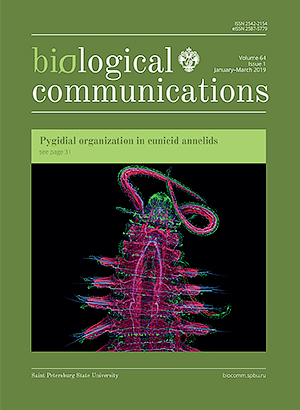3D-clinorotation induces specific alterations in metabolite profiles of germinating Brassica napus L. seeds
DOI:
https://doi.org/10.21638/spbu03.2019.107Abstract
During the whole history of their life on Earth, higher plants evolved under the constant gravity stimulus. Therefore, plants developed efficient mechanisms of gravity perception, underlying their ability to adjust the direction of growth to the gravity vector, i.e. the phenomenon of gravitropism. In this context, alterations in the magnitude and vector of the gravity field might compromise plant growth and development. This aspect was successfully addressed in gravity fields of low intensity (microgravity). On the other hand, microgravity can be simulated on the Earth by clinorotation, i.e. rotation of the experimental plant along one or several axes. This approach is routinely used for studies of gravity-related responses of crop plants, although the effect of simulated microgravity on the most sensitive ontogenetic stages — germination and seedling development — is still not sufficiently characterized. Recently, we addressed the effects of clinorotation on the proteome of germinating oilseed rape (Brassica napus) seeds. Here we extend this study to the seedling primary metabolome and address its changes in the presence of 3D-clinorotation. GC-MS analysis revealed essential alterations in patterns of sugars and sugar phosphates (specifically glucose-6-phosphate), methionine and glycerol. Thereby, abundances of individual metabolites showed high dispersion, indicating high lability and plasticity of the seedling metabolome.
Keywords:
Brassica napus, clinorotation, 3D-clinostat, metabolomics, primary metabolites, seed germination, simulated microgravity
Downloads
References
Downloads
Published
How to Cite
Issue
Section
License
Articles of Biological Communications are open access distributed under the terms of the License Agreement with Saint Petersburg State University, which permits to the authors unrestricted distribution and self-archiving free of charge.





